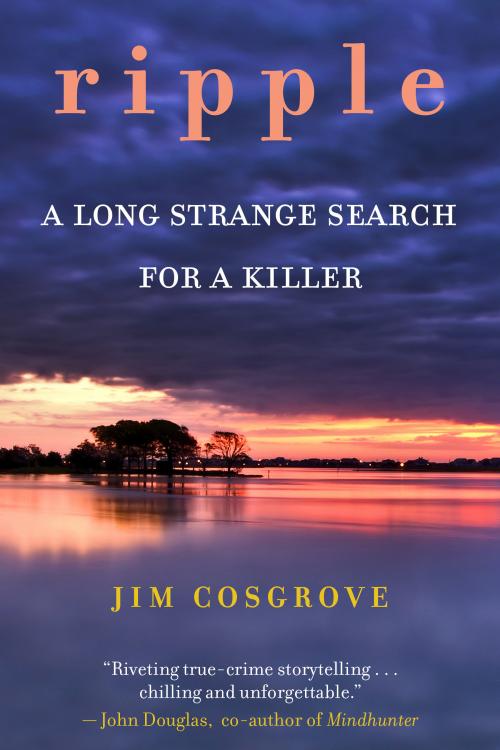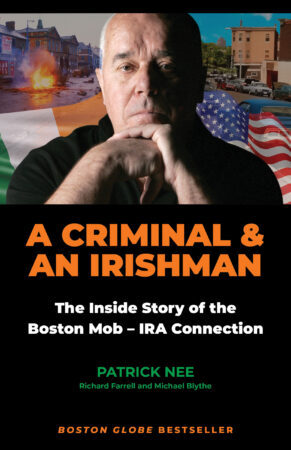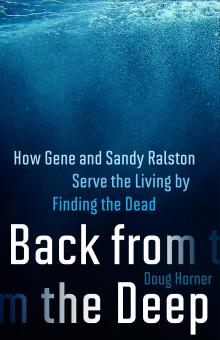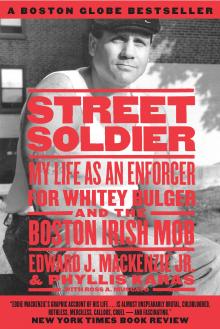Excerpt
If you moved at a steady clip, cut through a few yards, and hopped a couple fences, you could get from our house to the McGonigle’s in about twelve minutes. They lived a half-mile from where I grew up in the Brookside neighborhood of Kansas City, and their family looked a lot like ours — big, Irish, and Catholic — as was nearly every other family in our freckle-faced, Friday-fish-eating community.
And if you weren’t Irish, well, tough luck. In the blocks surrounding our house lived the Kennedys, McQueenys, McShanes, O’Mearas, O’Sullivans, O’Tooles, Donnellys, Hogans, Hadens, Monaghans, Murphys, and a dozen others, along with a handful of German-Irish and French-Irish families. On our street alone lived 22 kids under the age of 17. If a family had fewer than four children, you figured something must have gone wrong. Except for the few “publics,” we all went to St. Peter’s for church and school. And we walked there and back in gaggles, clogging up the sidewalks.
As a kid, I assumed if you weren’t Catholic, you were Jewish. In our part of town, you were one or the other. I discovered later that most of the white protestants had fled across the state line into the Kansas suburbs to escape the unrest and tension following the assassination of Dr. Martin Luther King, Jr., in 1968 and the failure of voters in 1969 to approve a tax increase for the cash-strapped Kansas City School District. Most of the white Catholics and Jews remained because they had their own schools. I didn’t know the few Protestants who stayed because they didn’t have kids. It turns out they were the older couples who yelled at us to get off their lawns.
None of us kids thought it odd that most of the Catholic families were also members of the Jewish Community Center. It’s just where we hung out. We were welcomed and comfortable there, and we shared some common bonds with the Jewish kids — an oppressive litany of archaic religious rules, heaps of guilt, and overbearing mothers. Besides, the JCC had a massive outdoor swimming pool and the best baseball league in town with the coolest wool uniforms with stirrup socks.
My parents and the McGonigles’ parents were part of the first wave of post-Second Vatican Council “social justice” Catholics. They rallied for peace, protested nuclear weapons proliferation, and worked for racial equality in our city. My father was one of the dozen white lawyers who succeeded in demanding that the local Kansas City Bar Association open membership to African American attorneys. Our parents became active in organizations like Kansas City Crisis, founded in the late sixties by black and white families dedicated to maintaining positive dialogue. I remember meetings in our house where the kids played upstairs, and the adults met downstairs to address envelopes and engage in spirited discussions. We met in the homes of black families, too — on the “other side” of Troost Avenue, just a mile and a half to the east and the unofficial (yet understood) dividing line between black and white Kansas City. Despite their well-meaning efforts, little progress was made toward integrating our city, and we, the Brookside children, remained blissfully oblivious in our lily-white bubble.
Everyone in our part of Kansas City knew the McGonigles. Aside from their abundant contribution to the human population, the family had a regular place at dinner tables throughout the neighborhood. Sunday’s pot roast, Thanksgiving’s turkey, and Easter’s ham likely came from the meat cases at McGonigle’s Market. Their name was synonymous with quality meat. Even their family station wagon was endearingly dubbed “The Meat Wagon.” The McGonigles had nine children who were all older and far cooler than me. They were loud and fun and smart and tough with rapid-fire wits. Many of them were in the same grades as some of my siblings at St. Peter’s Elementary School. Mena McGonigle graduated with my sister Mary. Frank was the same age as my brother John. Mark was in Ann’s class. Their youngest, Mike, was two years ahead of me in my sister Sheila’s class. I always envied my siblings who had an in with the McGonigle family. Especially my brother Tom. He and Jerry McGonigle were good friends throughout elementary and high school — still are. Jerry passed through our front door and squeezed in at our dinner table dozens of times, and Tom fit right into the McGonigle’s pool of testosterone like an honorary brother.
Their home, a two-story stucco house with a broad, L-shaped front porch, stood on a generous, shaded corner lot that was a hub of action in our bustling, kid-infested neighborhood. They were always fielding a game I was too young to play and throwing parties I was too young to attend. And their doors were always open — literally and figuratively.
The McGonigles loved to celebrate, with milestones like baptisms, first communions, and confirmations honored with white dresses, clip-on ties, and huge family receptions. They hosted a notoriously rowdy BINGO game every New Year’s Eve, and, in later years, they were known to enthusiastically “hoist a few” in honor of their heritage every 17th of March, or on any other day of the year.
Devotion to religion was important. Lots of prayers, rosaries, and masses. And, while the kids were still young, all eleven of the McGonigles would cram into a pew at the 8:30 a.m. mass every Sunday at St. Peter’s Church about five blocks down Meyer Boulevard from their home. Frank McGonigle was the sixth of nine children, and, from the beginning, he did things differently. He was the only sibling born backward, and he didn’t talk much until he was about three. His sister Joanie said he didn’t seem to mind being alone. “He was the only kid I can remember sitting in a playpen and being happy about it.”
Joanie and her three sisters helped raise “the boys,” as the four youngest were called. Frank came along two years before Jerry, who was one of the most personable kids Joanie could ever remember. Jerry was always smiling, always laughing, always hugging. Frank was sweet in his own way, but never pushed himself on anyone.
“I think about the times when those two little kids were sitting there,” remembered Joanie with a twinge of regret. “I’d always pick up Jerry because he would smile back at me.” As he got a little older, Frank would entertain himself for hours by dragging an old cardboard box out onto the concrete slab patio in the backyard and sitting in it, looking up at the hazy blue midwestern sky, watching the clouds that slipped by and the treetops that swayed in the wind.
Frank had a few friends in elementary school, but his closest friends, it seems, were his brothers. Competition was constant in their big house on Walnut Street. The four younger McGonigle boys played with a foosball table in the basement — one of those games with the little plastic men on steel rods running through their torsos. They set up leagues and drew up match and playoff schedules. They even named their players and kept statistics on how they performed. Looking back, Jerry, Mark, and Mike all agree that those years seem to be when Frank was happiest.
As the boys grew more coordinated, broom hockey replaced foosball as the sport of choice. The concrete patio in the back yard became the battle rink for these one-on-one showdowns. Players would face off with their brooms, as a designated referee dropped the lid of a mayonnaise jar they used as a puck. Tempers were tested as arms flew and shoulders checked each other. Half-serious fights would erupt to be broken up by the ref.
By the late sixties, the McGonigle boys, like many kids in Kansas City, were football fanatics, driven by the perennially strong Kansas City Chiefs led by future hall-of-fame quarterback Len Dawson. Frank and his brothers hosted neighborhood football games on the generous strip of grass between the sidewalk and the four-lane boulevard on the south side of the McGonigle house. Frank instituted himself as the all-time punter and kicker and insisted that everyone call him “Jan Frank-erud” after the Chiefs star place-kicker Jan Stenerud.
On most summer evenings, the streets and yards of Brookside teemed with impromptu games of Ghost in the Graveyard, Kick the Can, or Flashlight Tag. Inevitably some kid would run home crying because of an unfair ruling or a skinned knee or, like me, with a broken arm after a particularly rowdy round of Red Rover.
What I loved most about those games was that all ages were included. As one of the younger kids, I often teamed up with an older sibling or neighbor who would show me shortcuts and help me over fences. And when the streetlights came on, the excitement intensified — only to be squelched a short time later by the final “Olly, olly oxen free!” that signaled bedtime. Life was comfortable in Brookside. Each generously apportioned house possessed unique characteristics — modest wood-sided Craftsman Bungalows with inviting front porches, half-timbered Tudor Revivals with steep gabled roofs, brick American Georgians with towering chimneys — all solidly built between 1920 and 1935. Soaring oak, elm, and ash trees provided a thick canopy of shade in the summers.
It was the kind of neighborhood where somebody’s mom was always home, so if you were playing with kids on another block around lunchtime, you’d eat at their house. And all the moms served the same stuff — peanut butter or bologna or grilled cheese on white bread. There our lives intertwined, like a big extended family. We learned together, prayed together, and played together. All those people, places, faces, names, experiences, sights, and smells were stewed together, for better or for worse, into a cosmic shepherd’s pie.
Our bonds ran deep, and we stayed connected, even after years passed and my family moved a couple miles away to the outer edge of the neighborhood and my siblings went off to college and moved back home and started careers and got married. The Brookside/St. Peter’s ethos was permanently inscribed in our DNA.
So, when Frank McGonigle hopped into his car on a late spring afternoon in 1982 and drove off without a word to his family, we all felt it. After several days of no communication from Frank, the news began to spread throughout our tight-knit community. Our hearts ached with his family under the weight of their deepest fears. We all began to feel the slow creep of a sympathetic pall settling over our neighborhood, and we all secretly whispered prayers of thanks that this fate had bypassed our doors. Although I didn’t know Frank well — he was nine years older — it still felt like one of my own brothers or cousins had gone missing.
After a couple of weeks, we knew something had gone wrong. The faithful legions of church friends and neighbors rallied around the McGonigles by organizing prayer chains and phoning relatives in other cities to look out for Frank. They scoured newspapers from around the country for clues. They began attending Grateful Dead concerts to look for him. They sent out flyers. They shared tears with his mother, Joan, and wrung hands over “what-ifs” with his father, Bill. They listened and waited and hoped.
Those of us on the periphery did the only thing we were programmed to do in those situations — pray — at our evening meals, before bedtime, and every Sunday at mass. But when months stretched into a year without any clues or reliable leads, those prayers graduated from routine appeals to Jesus, Mary, Joseph, and St. Francis (Frank’s namesake) to the serious business of full rosaries and novenas to St. Jude — the patron saint of desperate cases and lost causes. This went on for nine years.
For nine years the family languished in uncertainty. They searched instinctively and desperately down lonely avenues leading nowhere. They formulated reasonable scenarios of robbery, drug deals, and mental breakdowns, and far-fetched theories involving amnesia. Because anything was possible, they held out hope, then gave it up dozens of times and regained it only to lose it again in a continuous, tortuous cycle. They carried on by clinging to those fleeting shreds of optimism and anticipation that Frank would just show up one day and everything would be cool again.






